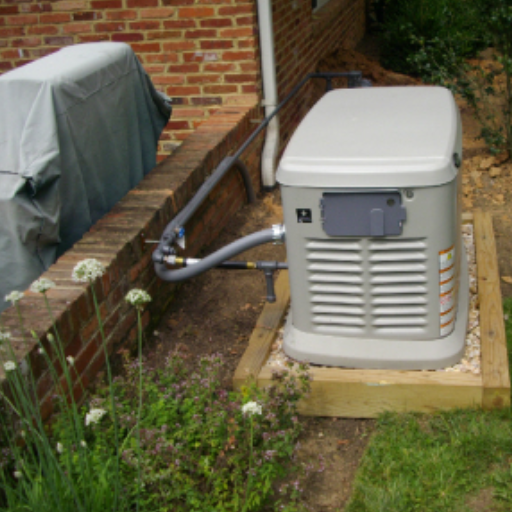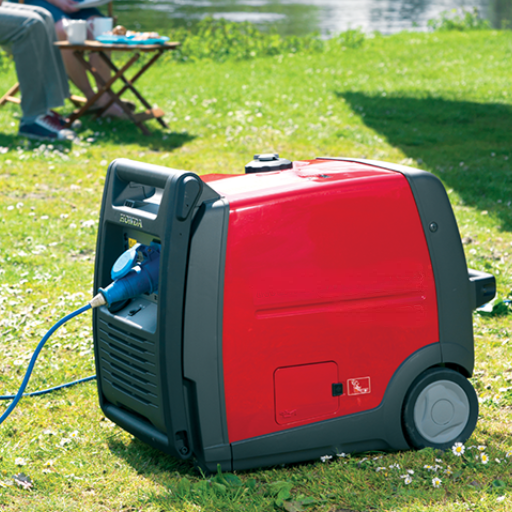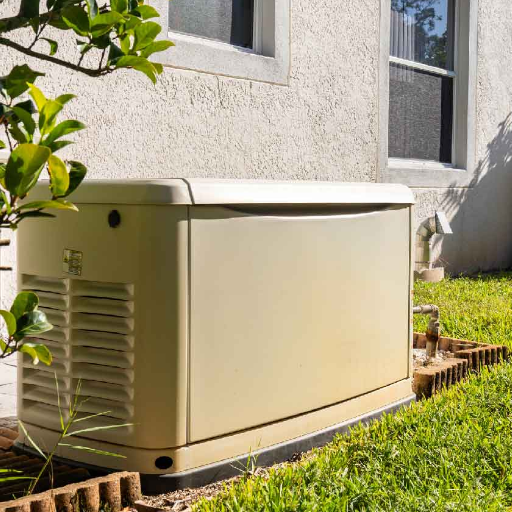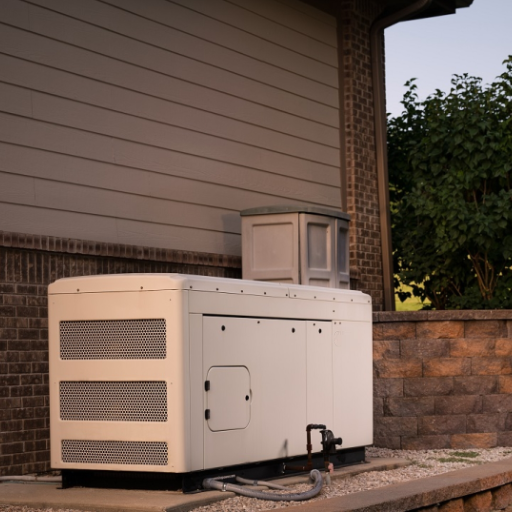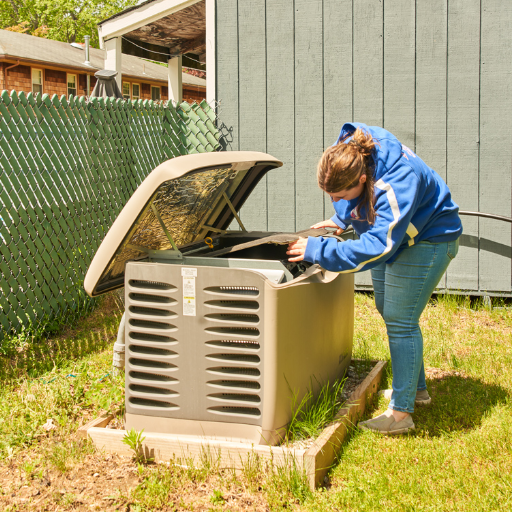When it comes to securing reliable backup power for your home, professional whole-house generator installation is a critical step. This article will guide you through the essential aspects of choosing and installing a whole house generator, ensuring that you find the most trusted and qualified installers near you. From understanding how these systems work to identifying the key factors in selecting the right installer, we aim to provide a comprehensive framework to help you make informed decisions. Whether you are preparing for power outages due to storms or seeking general energy independence, this guide will ensure your installation process is seamless, safe, and built to last.
How Much Does Professional Whole-House Generator Installation Cost?
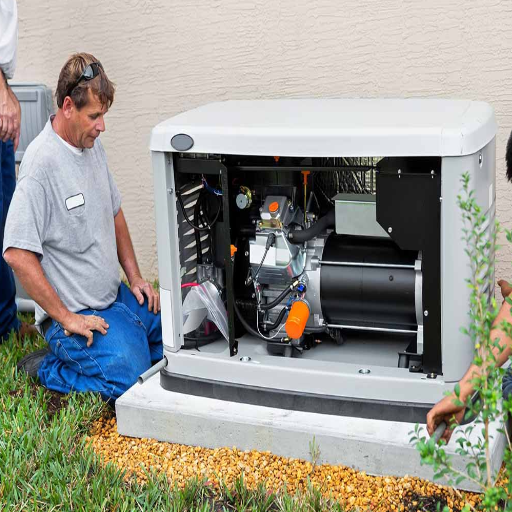
Factors Affecting Whole House Generator Installation Pricing
There are a handful of factors which affect the expense for the installation of a whole-house generator. For example, the fuel set up for the generator will impact the overall cost, as propane, natural gas, and diesel, all have different operational considerations. The site that will have the generator installed, might also require some modification such as a concrete pad or room for ventilation, which affects the cost, too.
The primary factors to consider are the power capacity and size of the generator. The amount a generator costs, is dependent on the power capacity measured in kilowatts. It is logical that bigger generators that can power a full house will come at a higher price, for instance, a standard 20 kw generator will be priced higher than a smaller 10 kw generator which can only power a few appliances.
Finally,y there are the expenses from the new electrical infrastructure that will be required to be installed, which add up the cost. The power transfer switches, which come either in automatic or manual modes, also need to be added to guarantee effortless power flow change.
Local labor costs, as well as permitting fees, contribute to the total cost. Without factoring in the cost of the generator, the average cost of professional installation can range from $2,000 to $5,000 or even more depending on other aspects. It is possible to determine the budget range for the installation after meeting the local safety requirements and by assessing the power needs and existing structure of the home.
Financing Options for Home Standby Generators
Depending on your budget and financial circumstances, there are numerous options available for financing a standby generator:
- Financing Options by the Generator Manufacturer: Financing plans are generally offered by most generator manufacturers through their approved dealers. These often come with low or zero-interest promotional offers for eligible buyers, thus helping with the upfront costs.
- Loans for Home Improvement: Personal loans specifically meant for home improvements are another option. These can cover both the installation and the purchase costs of the generator, as they have competitively low interest rates.
- Home Equity Line of Credit: A HELOC utilizes the equity of your home to cover expenses such as a standby generator. This option is usually more cost-effective than unsecured loans as it normally carries lower interest rates, but a sufficient amount of home equity is needed.
- Credit Card Financing: Credit cards can be used for smaller systems or as a short-term solution. Just be careful of higher potential interest rates if the balance isn’t cleared quickly.
- Incentives and Rebates for Energy Efficiency: A home standby generator, particularly one paired with renewable energy-efficient technologies, can qualify for some utility company or government subsidies, while certain local power companies offer rebates for installing them.
The feasibility of a particular method of financing should include evaluation of the generator unit cost, installation and labor costs, permitting costs, as well as the likelihood of maintenance plans so that a rough total cost estimation can be determined. For example, a generator priced at \$4,000 with \$3,000 for installation would approach a total expense of \$7,000. Weighing the costs of interest, the duration of repayments, and one’s income to debt ratio is vital during the decision-making stage.
Long-Term Value of Professional Installation
In my opinion, the greatest benefit of a professionally turnkey installation in the long run is the utmost reliability, safety, and efficiency it guarantees. Trusting their skills and professionalism, I am certain that any generator that is installed will meet all legal requirements, reducing the odds of it failing to work or even posing a danger. It is usually accompanied by strong wiring, adequate electrical load calculations, and ventilation in the case of fuel-powered generators, which are all essential. For instance,
- Electrical Load Calculations: If the generator’s capacity (in kilowatts) is greater than the total energy demand of my home, I will have to deal with overloading and if it is lower, I will have to deal with inadequate power supply.
- Wiring and Connections: If the wires are connected properly to the transfer switch, I will not have any problems with the transfer during outages. Correct gauge wires help to stop overheating or prevent voltage drop.
- Ventilation and Placement: Proper spacing allows the unit to decompress and release carbon monoxide as well as operate without hindrance. The right exhaust systems also reduces the risk of carbon monoxide build up.
In addition, professional installation almost always comes with piece of mind warranties along with other forms of support which diminishes future repair costs. Even though, there tends to be higher upfront costs, the level of confidence received from proper setup along with guaranteed operational assistance makes it worth it.
What’s the Process for Installing a Whole-Home Generator?
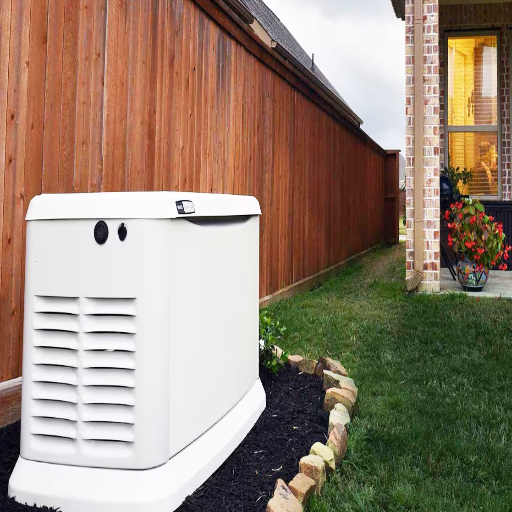
Initial Assessment and Generator Type Selection
The first step involves analyzing your home’s energy demand in detail, which includes adding up the wattage of your most used appliances and systems. This gap analysis makes sure that the selected generator is nota dummy over and under capacity. Important technical elements to observe are:
- Total Power Considering Requirement (kW) Need: Add the wattages of important systems like HVAC, medical device, refrigerator, lighting, and set a scale for the generator. A standard house may fall between 7-20 kW, depending on the size and demand for electricity.
- Fuel Type: Choose natural gas, propane, diesel or gasoline depending on how accessible they are, how much they can be stored, and how efficiently they will run. Natural gas is best when the device is needed to run all the time, while propane is better when the device can sit and will be used in the future because it can be stored without losing its effectiveness over time.
- Transfer Switch Specification: Decide if you want a manual or automatic transfer switch and make sure that it can work with the electrical panel’s amperage, 100 or 200 amps.
- Voltage Requirement (e.g., 240V or 120V): Confirm that the requirements on the output side of the generator are the same as the home’s systems voltage requirement.
By the end of this step, you will ensure that the major components of a household generator are planned so that the components function seamlessly irrespective of the outage duration, thereby optimizing performance and reliability of the household.
Permitting, Electrical Panel Work, and Transfer Switch Installation
As with any installation, getting the necessary permits, modifying the electrical panel, and installing the transfer switch require great attention to detail if you want to achieve proper integration of the generator into your home’s system.
- Permitting Process: I would check if the local authority has any guidelines on whether a permit is needed. Most municipalities require a permit, and they have some guidelines on security concerns, safety, and code compliance.
- Electrical Panel Rating: I would need to estimate the amperage my home’s electrical panel can handle. Common ratings of 100 amps, 200 amps. The generator’s capacity needs to match the panel’s capacity. Both the panel and the transfer switch have the capacity, otherwise, there will be damage or overloading.
- Transfer Switch: There are different levels of comfort and ease when it comes to choosing a manual or automatic transfer switch, but for safety and practical purposes, I would choose one that accommodates the output voltage of the generator. High-demand systems usually require 240V, and for smaller needs, 120V would suffice. The level of automation desired during power outages also dictates whether an automatic transfer switch is chosen.
The set is compliant, efficient, and safe because proper local codes are followed and proper integration of the other technical requirements is done.
Final Testing and Generator Maintenance Plans
To resolve the issues related with final troubleshooting and maintenance, I would make sure that the generator is fully stressed with an appropriate load test. This facilitates confirmation of whether the equipment can deliver the needed power (for example 120V for the lower systems and 240V for the demanding ones) while maintaining voltage levels and complying with the load’s dynamics.
- Oil and Filter Changes: Using unprocessed oil, set a processed oil replenishing level that does not exceed 50-100 hours relative to the expected performance or as set by the device constructor. This ensures lubrication of parts and components are working.
- Coolant Levels and Inspection: Make certain that amounts of coolant supplied are sufficient, and examine coolant for leaks to prevent overheating while in operation.
- Battery Testing and Charging: Know that every battery and voltage as well as the charging system must be frequently checked to guarantee reliable start.
- Fuel System Maintenance: Examine fuel lines and filters while checking contamination of fuel(watery or dirty fuel should be avoided). Use of low quality fuel tends to diminish generator efficiency.
- Control Panel Diagnostics: Inspect control panels for output and error codes that indicate performance precluding deficiencies.
- Exhaust System Inspection: Search for any blockages or damage in the exhaust system to control emission levels and backpressure.
Following these established guidelines and incorporating them into a routine maintenance plan allows me to guarantee that the generator is safe, in good working order, and ready for use whenever necessary.
Should I Hire an Electrician or a Specialized Generator Installer?
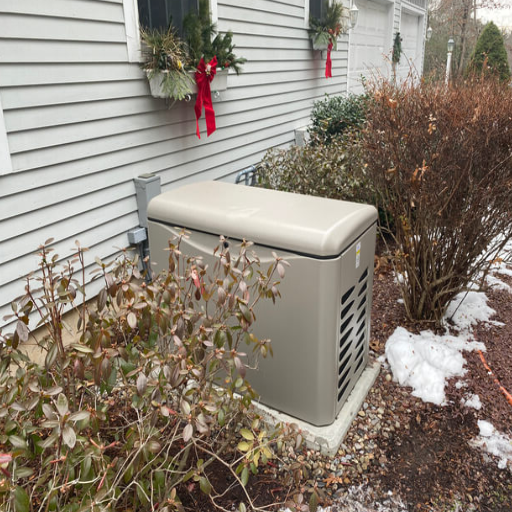
Benefits of Licensed Electricians for Generator Installation
The proper installation of an electric generator is best left to a licensed electrician as this minimises the risk of electrical code violations and safety standard breaches. Doing this also ensures perfect compliance with local instructions with no circuitry issues or power spikes. The licensed electrician has training that helps in the proper checking of the generator’s suitability with your home’s electrical system, including vital technical details like:
- Electric Load Capacity and Sizing: A licensed electrician will most probably determine the required wattage of the generator by carefully assessing your house’s essential power requirement. For instance, to avoid overworking a typical home backup generator, he or she would make use of the range of about 5,000 to 7,500 watts for indispensable electrical appliances and systems.
- Transfer Switch Installation: Installation of automatic or manual transfer switches is done by transfering generator supply enablement or disabling of power influence to guarantee that utility power can be switched on without risking backfeeding that can harm the electric power circuits or pose a safety hazard to utility workers.
- Frequency and Voltage Stability: The generator will need to be tested by qualified electricians with a working knowledge of the particular load keeping voltage use levels as well as frequency at the voltages around 120/240 and 60 Harz for residential house consumption, which is essential to avoiding destruction of gadget-sensitive electronics.
- Grounding and Bonding: Protection against malfunctioning electric shock is provided through proper grounding and bonding, which adheres to National Electric Code (NEC) requirements while assuring secure acceptance of danger signals from the system.
Using their skills, licensed electricians can enhance, age, and safety protocols associated with the generator, making them a trusted candidate for this important task.
Specialized Generator Contractors vs. General Electricians
Specialized generator contractors have specific competence and expertise in studying other systems and cover the generators’ installation, repair, and maintenance. They have knowledge on power load factors, fuel system types (natural gas, diesel, propane), transfer switch capabilities, and appropriate sizing of the generator for the specific application, and many other processes and parameters.
As for the general electricians, they have knowledge on different electrical systems and generalization already described, but do not have skills on optimizing nor working on the generator sets. An electrician can carry out elementary wiring or interconnect activities; however, the understanding of harmonic distortion, voltage regulation, or automatic transfer switch calibrating is usually generator contractor work.
With these precautions, a generator can work reliably, serve efficiently over a long period, and lessen the chance of a generator or clients’ unskilled personnel causing turmoil, mislaid equipment, or incorrect procedures.
How Long Does Professional Whole-House Generator Installation Take?
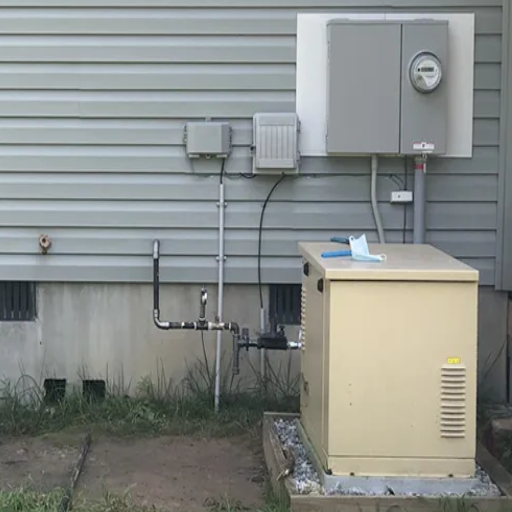
Typical Installation Process Timeline
Usually, the time it would take for an expert to install an entire house generator ranges from one to five days. Other factors might contribute to these timelines, such as how complicated the system is, whether or not the site is complete, and if the necessary permits are secured. First, Step one of the installation process starts with evaluating the site, which includes a calculation for the electrical load. This enables the installer to determine how powerful the generator needs to be to supply sufficient power to the house. To illustrate, 12 kW would be an appropriate generator power if a home draws backup power of 50 amps at 240 volts.
Next, the deployment of the generator unit is mounted. This is done after the installer units the permit and signs the inspection wires before the installation for what is known as the local electrical residential service. It includes fastening the generator unit, linking a transfer switch to an electrical switchboard, showering wires over the electrical panel, and using control wiring to interconnect to the generator. Other considerations involve sufficient grounding, sufficient space for airflow ventilation as required by the manufacturer, and load distribution to avoid reaching the maximum capacity to prevent some electrical overload.
After all these steps have been completed, the last step is for the technicians to run some tests on the system. This checks the voltage that is transferred, how good the frequency stability is, the typical value should be 60hz for North America, and whether the transfer switches work properly and smoothly when the system is under an outage test, which is simulated. Having this kind of approach will make sure that the equipment that has been powered by the generator works efficiently while being safe and within the standards provided.
Factors That Can Extend Installation Time
Some important elements can influence the duration of the installation of systems incorporating generators or other sophisticated power systems:
- Preparation and Evaluation of Site: A failure to prepare a site and its equipment can result in delays to the project’s timelines. For instance, some sites may have rough topography that requires site grading or may have limited space, which can make it difficult to position equipment. To minimize these delays, comprehensive soil analysis and building inspections should be carried out ahead of time.
- Acquisition of Permits and Adhering to Set Rules: The right permits, including electrical and environmental compliance certificates, can differ from one region to the next and can sometimes take longer to acquire. If emissions or sound-dampening design measures are not incorporated into the design, then local code regulations may not be satisfied, resulting in some delays.
- Testing and Interfacing with a System: Verifying that the generator and the system that has been put in place are functional is the first order of business. This involves checking that voltage ratings for equipment are correct 120V, 240V or there is three-phase power, as well as ensuring that the frequency is stable at 60Hz for all applications in North America. In addition, load balancing is a must, and also, interface with transfer switches must go through vigorous testing.
- Equipment Availability: The Automatic Transfer Switches (ATS) and some Generators in question sometimes experience supply chain delays, which can impact the timelines.
- Testing and Quality Assurance: The critical procedures such as load bank testing, full capacity testing or Outage testing must be done in order to ensure system reliability which may lead to an extended timeline.
Considering these factors upfront along with proper project planning can assist in facilitating the installation process while maintaining the expected levels of safety and functionality.
What Are Common Problems with DIY vs. Professional Generator Installation?
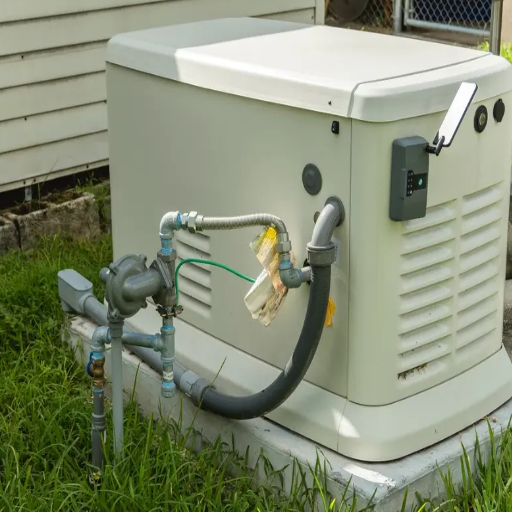
Safety Concerns and Code Compliance Issues
Safety and compliance are both prime issues of concern when weighing DIY and professional generator installation. A lack of compliance with local codes results in ungrounded installations, hazardous circuits, and wiring that is not protected. Such conditions heighten the peril of electric shock, fire, or even failure of the generator. Professional installers, however, review the site before installation and follow set installation steps to guarantee that their work is aligned with the National Electrical Code (NEC) and other local laws.
- Grounding Resistance Levels: Grounding must be done appropriately so as to control stray voltage and provide protection from electrical faults. The National Electrical Code (NEC) suggests a grounding resistance between 0 to 25 volts unless supplementary grounding is provided.
- Load Calculations: Proper assessment of load is necessary in order to find the value of the generator. The value of the generator’s kW mustn’t exceed the demand of the system because that may damage the system and cause it to fail.
- Transfer Switch Specifications: UL 1008 compliance standards are the Automatic Transfer Switch specifications in charge of safe transfer of utility power and generator power.
- Ventilation and Exhaust Systems: Airflow or exhaust clearance during DIY installations may not be adequaetly considered, which may have repercussions such as overheating or the risk of carbon monoxide poisoning.
- Wiring Gauge and Compatibility: Selecting appropriate wire size and insulations are extremely critical, as negligent choices may result in voltage drops or overheating. To avoid these problems, wire gauges should be selected according to the current load with compliance to NEC wiring tables.
Professional installation solves these challenges with a proactive approach, allowing them to minimize safety risks while ensuring system interconnections are compliant with all relevant policies and standards.
Warranty Implications of Professional vs. DIY Installation
As one considers the warranty liabilities relating to professional versus DIY installations, it is worth noting how manufacturer warranties are generally more framed. A good number of manufacturers, for instance, require their warranties to remain valid only if certified professionals install the system. This is because trained professionals are bound to specific technical norms that guarantee that all components are installed safely and correctly.
- Wire Sizing: The NEC standards wire gauge for a circuit should be capable of carrying its maximum load without incurring excessive voltage drops, for example, 10 AWG for 30 amps and 12 AWG for 20 amps (circuit depending).
- Voltage Continuity and Grounding: Professionals are capable of checking the line-to-line faults as well as proper grounding which, if not done, can void the warranty.
- Component Compatibility: Certified installers make certain that operational failure does not occur by properly matching system specification with the inverters, batteries, and connection interfaces.
Warranties can be voided due to improper DIY installations. Mistakes such as improper wiring, ground problems, and code violations can create damages. Professional installations not only safeguard the owner’s manufacturer warranty, but also offer peace of mind in regard to potential performance and safety-compromising errors.
Reference sources
Frequently Asked Questions (FAQs)
Q: What are the benefits of professional whole-house generator installation?
A: Professional whole-house generator installation ensures that your generator is installed correctly and safely. This service guarantees that the generator can power your home efficiently during outages, providing peace of mind for homeowners. Additionally, professional installation can help you choose the right type of generator for your needs.
Q: How do I find trusted generator installers near me?
A: To find trusted generator installers near you, you can search for certified electricians and companies that specialize in home standby generator installation. Checking online reviews and getting recommendations from neighbors can also help you locate dependable services.
Q: What is the cost to install a whole-house generator?
A: The cost to install a whole-house generator can vary depending on the type of generator, its capacity, and the complexity of the installation. On average, homeowners can expect to pay between $5,000 and $10,000, including the price of the generator itself and installation services.
Q: What type of generator should I choose for my home?
A: The type of generator you should choose depends on your power needs, budget, and fuel preferences. Common types include natural gas generators, portable generators, and propane generators. A professional can help you determine the best generator for your home.
Q: How often do generators require maintenance?
A: Generators require regular maintenance to ensure they remain dependable and efficient. This typically includes checking the oil, filters, and batteries and scheduling professional inspections at least once a year. Regular maintenance helps prevent unexpected generator repairs.
Q: Can a portable generator be used as a whole-house generator?
A: While a portable generator can provide temporary power for essential appliances, it is not designed to power your entire home. For whole-home generator installation, a standby generator is recommended to keep your home running smoothly during power outages.
Q: Do I need an electrician to install a generator?
A: Yes, it is essential to hire a licensed electrician to install a generator. This ensures that the installation complies with local codes and regulations and that the generator is safely connected to your home’s electrical system.
Q: What should I do if my generator needs repairs?
A: If your generator requires repairs, contact a professional generator service provider. They can diagnose and fix issues to restore your generator’s functionality, ensuring it is ready to power your home when needed.
Q: How can a generator save you money in the long run?
A: A generator can save you money by preventing losses from spoiled food, water damage from sump pump failures, and other costs associated with power outages. Investing in a reliable home generator can keep your home safe and comfortable during unexpected power interruptions.



